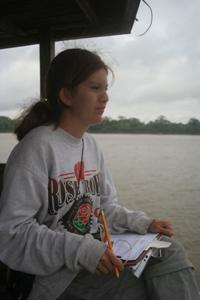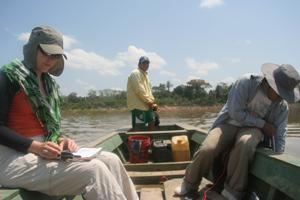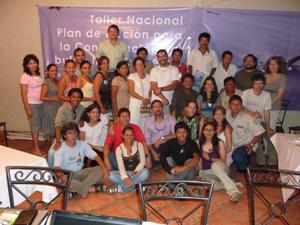Adriana Mireya Salinas Mendoza
Promote Inia boliviensis as ambassador and umbrella species for conservation in the Bolivian lower Amazon, under threat of dam construction.

Amber Beerman Faunagua.
The Bolivian river dolphin (Inia boliviensis) is a charismatic and endemic cetacean from Bolivia, recently recognized as new species. This species is relatively well protected in the Bolivian Amazon; however it is very vulnerable due to two reasons:

Adriana Salinas Mendoza Faunagua.
(a) in contrast with Inia geoffrensis, total population size of I. boliviensis is low;

Faunagua.
(b) the planned construction of hydropower stations (Jirau and San Antonia) on the Madera River is a major threat for this species.
The objectives of the present study are
(a) To evaluate distribution patterns of the Bolivian river dolphin in the northern Amazon;
(b) to evaluate the role that rapids and water falls in the Mamoré-Madeira basin play for the distribution of the species;
(c) estimate the impact of hydropower construction on the distribution and abundance of the species;
(d) adjust the national conservation plan of Inia boliviensis;
(e) provide recommendations to the Bolivian government concerning conservation strategies;
(f) elaborate a digital version of a folder on dolphin conservation.
The present study will provide us information on the possible impact of dam construction on ecosystem health, as measured by the presence of Inia boliviensis. Also, knowledge of the distribution of Inia boliviensis will guide us during the design stage of long term conservation strategies. Besides it will provide the base line for the elaboration of a conservation and management plan of this species.
The study will be conducted in the northern Amazon, in the lower river basins of the Mamore, Iténez, Madre de Dios and Beni rivers. The fieldwork will be conducted in September 2009 (low water conditions). We will follow the standard methodology recommended by the Foundation Omacha.
We will characterize the aquatic habitat of the species (geomorphological and chemical characterization), measure the abundance of the species (using strip-width transects and calculating the index of abundance), verify habitat use, classify habitats in relation to their use, evaluate distribution patterns (a map will be elaborated with the help of the program ArcView GIS), and will coordinate the organization of the national workshop (meeting with all the national dolphin specialists).